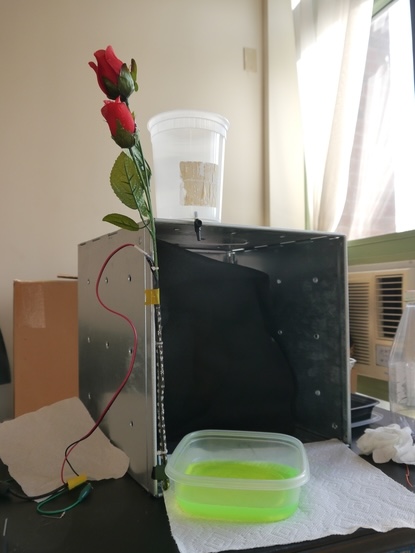
Inspiration
The first time I remember seeing a time fountain was a blog post by Nate True from 2006 (archive.org).
Operation
The time fountain works by using flashes from UV LEDs to illuminate falling drops of fluorescent dye. If the drops fall at a consistent rate, the UV LEDs can be flashed at the same frequency as the drops are falling so that the drops appear to be suspended in mid-air. Or, if there is a small frequency differential, it appers that the drops are rising upward.
This blog post (archive.org) provides a more detailed explanation.
Construction
I used a 555-timer configured for low-duty-cycle astable operation, with a 100 uF timing capacitor, 100 ohm resistor on the charging path, and 10k ohm pot on the discharging path. This corresponded to roughly 15 ms on-time and 0.5 Hz to 20 Hz frequency. An n-channel FET switches the LEDs.
While it would be nice to detect drops and reset the cycle so phase errors don’t accumulate, the effect is still pretty good with a simple timer as long as you have consistent drops.
I bought some fluorescein dye from Ebay but it turns out that highlighter dye works just fine and doesn’t precipitate out of solution like the fluorescein. I diluted the dye from one highlighter into about 100 mL of water.
To make the drops I started by punching a hole in a food container with a needle, but wasn’t able to achieve the consistency I wanted. The best solution I found was to punch a hole in the bottom of the container and use a fish tank aeration valve, sealing with super glue. This was able to produce consistent drops, with an easily adjustable drop rate.
Action
It’s a cool effect to see in person, but difficult to capture on camera because of the lighting conditions. Here are a few videos that do a better job of showing off the effect:
video 1
video 2
video 3